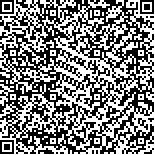| This article has been:Browse 1776Times Download 3409Times |

scan it! |
|
|
| DOI:10.13522/j.cnki.ggps.20180119 |
|
| Using the SEBAL Model to Calculate Evapotranspiration in Tumoteyouqi |
|
SU Tingting, WEI Zhanmin*, BAI Yanying
|
|
College of Water Conservancy and Civil Engineering, Inner Mongolia Agricultural University, Hohhot 010018, China
|
| Abstract: |
| 【Objective】Evapotranspiration is one of the most important processes in hydrological cycle and this paper evaluates the feasibility and accuracy of the SEBAL model to estimate it in Tumoteyouqi of Baotou, Inner Mongolia. 【Method】 Using the Landsat8 remote sensing images taken during the crop growth season in 2015, the SEBAL model was established to estimate the evapotranspiration. The result was validated against that estimated using the FAO-recommended Penman-Monteith formula and water balance method respectively, based on the multivariate stepwise regression of the factors believed to affect evapotranspiration. 【Result】 The daily evapotranspiration varied spatially, peaking in the mountainous areas. Compared with that calculated from the water balance, the average relative errors of the estimated evapotranspiration from the SEBAL model and the Penman-Monteith formula was 6.053% and 7.682% respectively. Daily evapotranspiration was significantly correlated to NDVI and surface temperature, and we derived an optimal multivariate stepwise regression model to estimate the evapotranspiration. 【Conclusion】 In the absence of ground-truth data, the SEBAL model can provide an accurate estimation of the evapotranspiration which was affected greatly by NDVI and surface temperature. |
| Key words: remote sensing; SEBAL model; evapotranspiration; spatial variability; multiple stepwise regression |
|
|